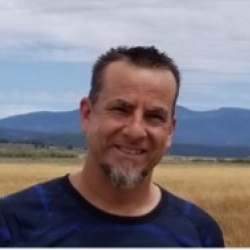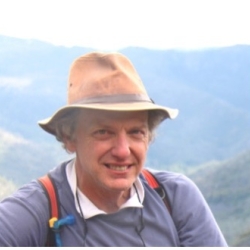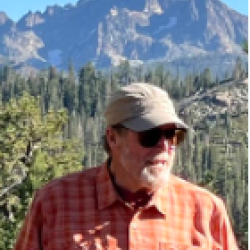GEOG 632: Environmental Measurement and Monitoring in the Northern Sierra
Dates: July 6-11, 2025
Instructor: Andrew Oliphant, Jerry Davis, Mike Vasey
Fee: $395.00 + meals and accommodations fees
Units: 1
Term: Summer 2025
Course Description
This class explores a range of field-based measurement and monitoring techniques for assessing mountain environments, particularly aspects of mountain meadow and forest ecosystems and streams, weather and climate, and carbon cycling. We will explore the foundations of good field techniques, including accurate data and methods reporting, error assessment and quality control, as well as fieldwork safety and equity in challenging environments. Based at the Sierra Nevada Field Campus, the class includes five days of field-based measurement in a variety of extraordinary environments of the northern Sierra Nevada, interspersed with lectures and data assessment workshops at the field campus.


Instructor Bio
Andrew Oliphant: Andrew (andrewo@sfsu.edu) has been a professor in the Department of Geography & Environment, now School of the Environment at San Francisco State University since 2002, where he teaches and researches environmental meteorology and climatology as well as field techniques. His research field is in micrometeorology and biometeorology, and includes measuring ecosystem carbon sequestration and water use, surface energy exchanges and associated microclimates. He uses a variety of monitoring instruments and micrometeorological techniques. His field projects have included mountain meadows of the northern Sierra Nevada, the Southern Alps of New Zealand, the Dry Valleys of Antarctica, tropical islands of Northern Australia, deserts of central Iran, and urban sites in San Francisco and Black Rock City, NE.

Instructor Bio
Jerry Davis: Jerry Davis (jerry@sfsu.edu), professor of geography and environmental science at SFSU, is a biogeomorphologist who studies the interaction between biotic and geomorphic systems, with an applied focus on the effectiveness of restoration methods. Over the last 20 years, he has been investigating northern Sierra meadows undergoing restoration ranging from pond & plug installations to beaver dams and analogs, with most projects based out of the Sierra Nevada Field Campus, most recently involving drones capturing color and multispectral imagery for assessing stream morphometry and vegetation/soil moisture relationships.

Instructor Bio
Michael Vasey: Mike Vasey (mvasey@sfsu.edu) is a field scientist with a passion for resolving conflicts between the needs of human society and the conservation of nature. Now emeritus since 2021, he taught a popular non-majors conservation biology class at SFSU for two decades, including week-long classes at the Sierra Nevada Field Campus (SNFC) in the late 1990’s and early 2000’s. For his MA from SFSU, independent studies, and PhD studying maritime chaparral, Mike has utilized a variety of ecological field methods. After retiring, Mike developed a SNFC class focused on management options for Sierra communities vulnerable to increasing wildfire risk and, in particular, the North Yuba Forest Partnership (see https://www.yubaforest.org/). Long term monitoring of control and treatment plots is key to evaluating the success of this project and we will use the latest field methods to put this into practice at sites near the SNFC.
Course Details
Course Schedule
Arrive Sunday evening for a 7:30 PM introduction. Each day, we will focus on different techniques in different environments in the surrounding region. This will typically include a morning preparation lecture, intensive field measurements during the day. After dinner, we will analyze and discuss the data we collected, starting at 7:30 PM. The workshop will conclude by noon on Friday.
Supplies List
Waterproof field notebooks. Laptop for evening data analysis optional. All relevant literature provided. Extra space in daypacks for carrying field equipment.
Lodging and Camping Supplies
Camping gear if you are staying on campus:
- tent and sleeping pad (unless you are staying in our tent with a cot provided)
- warm sleeping bag
- pillow, toiletries, and towel
- flashlight and lantern
- alarm clock
Field gear for everyone:
- day pack
- sunscreen
- insect repellant
- water bottles
- plastic containers for packed lunches
- sense of humor
You might also want to bring:
- camera
- binoculars
- hand lens
- camp chair
Clothing:
The weather in the Sierra Nevada can vary greatly, even in a single day. Be prepared for chilly temperatures at night, even below freezing early in the summer. Rain is a possibility any time, whether forecast or not. Variable weather clothing that can be layered is best: long pants and a long-sleeved shirt, warm sweater and jacket, t-shirt and shorts or skirt, sturdy shoes or hiking boots, sun hat, rain gear, and a warm hat or gloves for cold weather and/or night activities. And, if you come later in the season, bring your swimsuit for afternoon dips in the lakes!